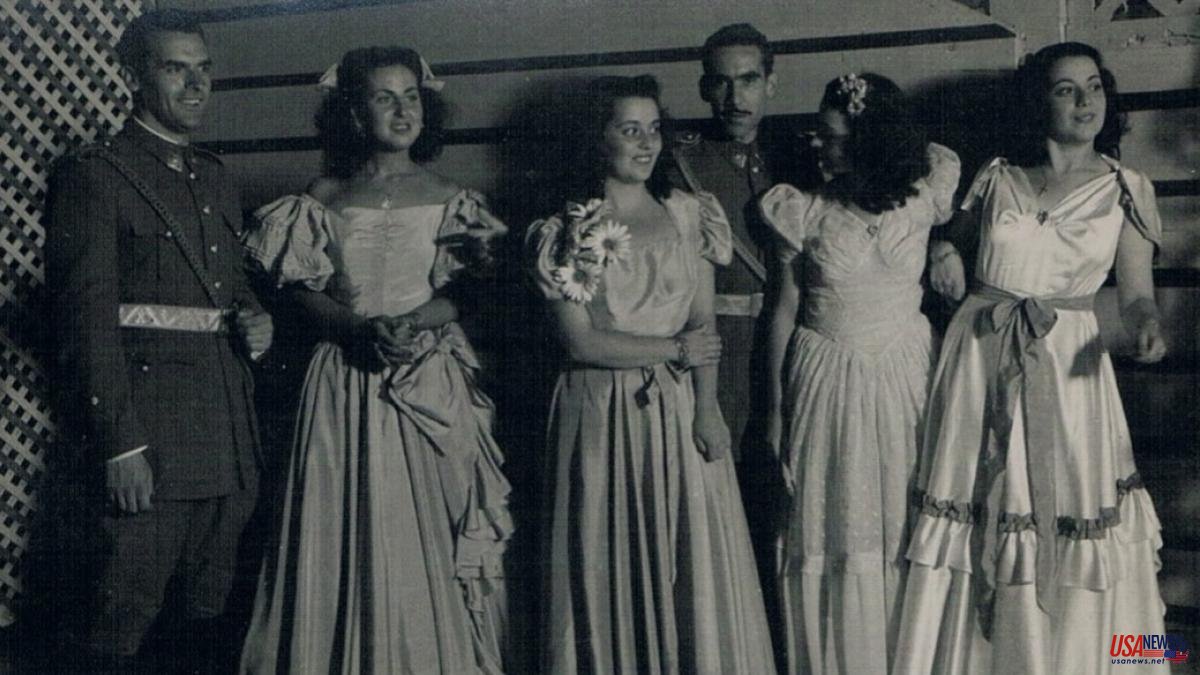In December 1870, three councilors from the Valencia City Council presented an instance in the town hall to celebrate the first Great Fira de València. That same evening, the plenary session of the consistory debated and approved the proposal. Just a few months later, in July 1871, this first great urban cultural and commercial event was celebrated, the first secular and secular festival in the history of the city. Although it did have some religious reference, its motivation did not revolve around any saint or any virgin.
The anecdote is explained by the director of the city's Festive Culture Museums, Gil-Manuel Hernàndez, who has just published La Gran Feria de València (1871-2021), a review of the 150 years of what for decades was the great celebration of the city until the outbreak of the Fallas.
The professor of Sociology and Social Anthropology says that the councilors who presented the proposal did not improvise. “There had been talks with institutions, casinos, athenaeums, corporations, companies and they had all the support to move forward. When the time came it was not easy, there were logistical problems, but already in July 1871 it was possible to make a historic parade where pictures of old Valencia were represented and the traditional rocks, guilds and floats paraded with allegories of commerce, industry and also to science and technology.
Hernàndez indicates to La Vanguardia that it was a proposal led by the city's bourgeoisie that sought to come up with an attractive formula for all audiences. "The April Fair in Seville was taken as a reference -which had begun a few decades earlier-, but the universal exhibitions that had been held in London and Paris were also taken into account", he underlines.
And it is that, on the one hand, there was a commercial aspect, but they wanted to make it attractive so that the popular classes would come closer. "It had the vocation of a mass festival, the ability to integrate very different acts and the power to reaffirm a transversal identity of Valencianity," says the author. For this reason, pavilions were set up in the most select artery of the city, the Alameda, and parades, performances, sports competitions and commercial activities were held.
“It was a product for all audiences, but thought from a bourgeois perspective. They wanted to sell the new industrial, commercial and modern Valencia that had just demolished the walls”, comments this specialist in traditional festivals. Likewise, the fair had a component of ostentation of power since the bourgeoisie set up their facilities in the Alameda and paraded their carriages and their dresses. "In the same way that happened in the Liceu in Barcelona or today in the Bernabéu box, there the wealthiest classes showed their power, staged their dances, did their social acts and related to each other".
All these ideas are shared by Gil-Manuel Hernàndez in a book that has been presented this week and that, in addition to explaining the origins of the festival, tells how its celebration became the mirror of a society -the Valencian- in constant change with its conflicting ideologies and with its evident class fractures.
The sociologist explains that the book tries to update and compile other works on the Great Fira de València that he has already done, as well as record the ephemeris of the 150th anniversary of its creation, which, although it was celebrated last year, due to the pandemic situation did not have the celebration it deserved.
In the book, the author distinguishes various stages. The first is that of splendor that would last until 1920, making it the first festival in the city, even ahead of Corpus Christi, which had been for centuries. At that stage, explains the director of museums of the City Council, it becomes "the great summer production of the city".
Although it is true, Hernàndez points out, in the 1920s there was a certain stagnation; the Fallas begin to gain ground and the arrival of the Republic that claims to democratize and make the festivals more horizontal makes the wealthy classes begin to feel annoyed.
With Francoism, a new phase is entered. The regime tries to turn it into a tool of political and ideological indoctrination with parades of a markedly political air with exaltations of National Catholicism.
At the same time, the Fallas continue to expand and the season of second homes and tourism begins, which makes some Valencians leave the cap i casal in July. A cocktail that causes the party to go into a spin and into a situation of disorientation.
With the arrival of democracy the last stage begins. The first democratic governments try to remove that aristocratic patina but it becomes "a hodgepodge of acts without logic or direction," says the sociologist.
It is not until 2005 when a certain light begins to be seen. The sociologist says that inspired by the Festa de la Merced, a more modern program is being consolidated and for all, saving traditional events such as the Battle of Flowers or the Band Contest. Little by little, he explains, it became what is now an urban summer macro-festival with a lot of cultural offerings.













